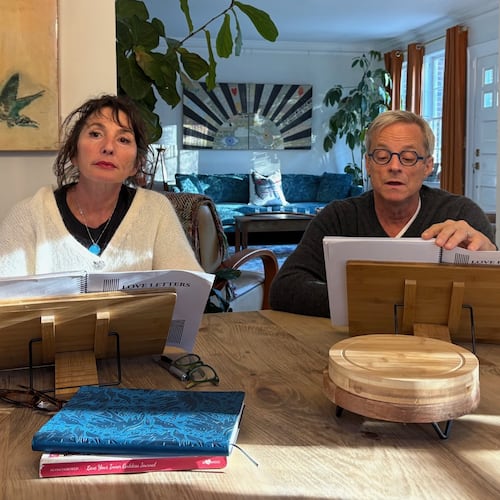ATLANTA BOTANICAL GARDEN
9 a.m.-7 p.m. Tuesdays-Sundays; until 10 p.m. Thursdays. $18.95; $12.95 ages 3-12; younger than 3 free. 1345 Piedmont Ave., Atlanta. 404-876-5859, atlantabotanicalgarden.org.
A major project is underway at the Atlanta Botanical Garden that will bring walkways, bridges, flowering shrubs and water features to its undeveloped northern end.
Construction has already begun on the project’s first phase, which should be complete by April 2015. The first phase’s cost is estimated at $7 million.
The improvements will all take place in an area called the Storza Woods, along Piedmont Avenue.
One of the last urban woodlands in the metro area, this copse of old hardwoods was fenced off for years, and attracted the sort of visitors — vandals, drug dealers, seekers of illicit sex — that were not appreciated by the garden’s managers.
In 2010, that changed. The Canopy Walk opened, a treetop-level walkway that brought visitors safely across the garden’s main automobile entrance and ushered them down into the woods, where walking paths were created.
Still largely undeveloped, the woods were alive with the sound of chain saws this week as arborists traveled up a temporary construction road and worked to clear trees.
Mary Pat Matheson, president and CEO, surveyed the activity and said the new project will give visitors more destinations.
Matheson pointed to a youngster in a party dress and stylish footwear, trailing along the Canopy Walk behind her fast-moving mother.
“It will give us more places to go, for folks like that one, in the pink cowboy boots,” Matheson said.
Led by Tres Fromme, landscape design and planning manager with the Botanical Garden, the creators envision “garden rooms” underneath the hardwoods. These would be nooks enclosed with banks of azaleas and shade-loving perennials.
A central element will be a “Glade Garden” with a 120-foot series of pools, or “stairs” of water, descending one of the gentle slopes. A bridge will overlook the glade.
Handicap-accessible pathways of various materials will curve through the woods. One of these, the “Woodland Ramble,” will be a boardwalk, made of extremely hard South American ipe wood. Suspended above the root systems of trees on corkscrew-shaped “helical” footings, the boardwalk will flank the western edge of the woods and circle back toward the center.
About two dozen trees are being removed from the woodlands to make room for hardscape and water features, Matheson said. The designers Spurlock Poirier Landscape Architects sited the Glade Garden in a spot where diseased trees were already slated for removal, to minimize the impact of the changes, she said.
The 15-acre Storza Woods date from the Civil War and feature many 100-year-old trees, including the state’s oldest tulip poplar.
Originally used as farmland, the acreage was purchased for horse-riding trails in 1887 by the Gentleman’s Driving Club (later the Piedmont Driving Club). The city of Atlanta bought the property in 1904 as part of Piedmont Park, and the Botanical Garden leased it in the 1980s, later naming it in honor of garden supporters Eleanor and Francis Storza.
The woods constitute about half of the Botanical Garden’s total 31 acres. Opening up the area will virtually double the garden’s usable space, and will greatly increase its ability to absorb visitors, Matheson said.
Visitation at the garden jumped from 280,000 in 2009 to 525,000 last year, said spokesman Danny Flanders. Attendance has been boosted by a multitude of activities hosted by the garden, including a holiday light show, outdoor concerts and such installations as the “Imaginary Worlds” exhibit, starring a brace of huge, fantastical topiary creatures, currently on display through October.
Flanders said the first phase should be completed by April 2015. During a second phase, developers will build a pavilion in the glade, for lectures, concerts and other gatherings.
The money for the improvements has all been given by private donors, Matheson said.
The Botanical Garden has recently been growing like topsy. Last year, the garden acquired a 168-acre parcel in Gainesville, which will open this spring with an amphitheater, a visitor’s center and display gardens.
Matheson said the Gainesville garden gives the organization room for nurseries to grow new specimens for the Atlanta garden.
The additions in the Storza Woods also will serve an educational purpose, demonstrating useful ways to grow gardens under the half-light, a useful skill in this tree-covered city.
About the Author
Keep Reading
The Latest
Featured


